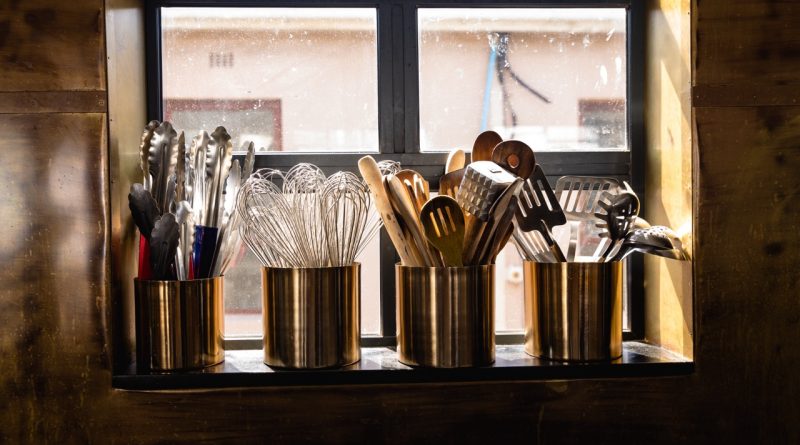The Design Story Of Zwilling Cookware Collections
Zwilling is a name synonymous with high-quality cookware and kitchen tools, rooted in tradition yet committed to innovation. Founded in 1731 in Solingen, Germany, the brand has evolved over centuries to become a leader in culinary excellence. This article explores the design story of Zwilling cookware collections, delving into its historical evolution, defining features, materials used, and tips for selecting the right cookware for your kitchen.
The Evolution of Zwilling Cookware: A Historical Overview
The story of Zwilling cookware dates back to the early 18th century when Peter Henckels registered the brand’s iconic twin logo. Initially focused on knives, Zwilling expanded its product line over the years, responding to the needs of the culinary world. The introduction of cookware collections in the 20th century marked a significant turning point, as the brand sought to provide chefs and home cooks with not only tools but also an integrated cooking experience.
As the culinary landscape evolved, so did Zwilling’s approach to cookware design. The mid-20th century saw innovations in stainless steel technology, allowing for durable and aesthetically pleasing cookware. This was a time when Zwilling began to collaborate with renowned designers, further enhancing the functionality and visual appeal of their products. These collaborations resulted in iconic collections that have become staples in kitchens worldwide.
Today, Zwilling continues to innovate while honoring its rich heritage. The brand employs cutting-edge technology and sustainable practices in its manufacturing process. By incorporating modern design elements with time-honored craftsmanship, Zwilling has solidified its reputation as a leader in high-performance cookware, appealing to both culinary professionals and cooking enthusiasts alike.
Key Features That Define Zwilling’s Unique Cookware Design
One of the standout features of Zwilling cookware is its commitment to ergonomic design. Handles are crafted to provide a comfortable grip, ensuring that users can maneuver pots and pans easily, which is crucial during busy cooking sessions. Many collections also feature a seamless transition between the handle and the cookware body, minimizing the risk of heat transfer and enhancing user safety.
Another defining characteristic is the use of layered construction in many of Zwilling’s cookware lines. This technique often involves bonding materials like stainless steel and aluminum, ensuring even heat distribution and preventing hot spots. This is particularly advantageous for delicate cooking tasks, where temperature control is essential for achieving optimal results.
Additionally, Zwilling collections often focus on versatility. Many pieces are oven-safe, dishwasher-friendly, and compatible with various heat sources, including induction. This level of adaptability ensures that consumers can use their cookware in a multitude of cooking environments, ultimately simplifying the cooking process and enhancing the overall culinary experience.
Materials and Technology Behind Zwilling Cookware Collections
Zwilling prioritizes quality materials in its cookware, with stainless steel being a primary choice. Known for its durability and resistance to rust and corrosion, stainless steel offers a clean and sleek appearance that fits seamlessly into modern kitchens. The brand often utilizes high-quality 18/10 stainless steel, which contains 18% chromium and 10% nickel, ensuring both strength and shine.
In addition to stainless steel, Zwilling incorporates advanced technology in its manufacturing processes. For instance, many cookware lines feature a patented "SIGMA Clad" construction, which consists of an aluminum core sandwiched between layers of stainless steel. This design not only enhances heat conductivity but also ensures that the cookware can withstand the rigors of daily use without warping or degrading.
Moreover, Zwilling is committed to sustainability and eco-friendliness in its production methods. The brand actively seeks to minimize waste and reduce its carbon footprint, using responsibly sourced materials and energy-efficient manufacturing processes. This commitment to sustainability resonates with modern consumers who are increasingly conscious of the environmental impact of their purchases.
Choosing the Right Zwilling Cookware for Your Culinary Needs
Selecting the right Zwilling cookware requires careful consideration of various factors, including cooking style, frequency of use, and meal types. For those who frequently prepare intricate dishes, investing in a comprehensive collection that includes saucepans, frying pans, and stockpots may be beneficial. This diversity allows for maximum versatility in cooking methods and recipes.
Additionally, consider the heat source when choosing cookware. If you have an induction cooktop, ensure that the selected Zwilling pieces are labeled as induction-compatible. Many of Zwilling’s collections are designed with this in mind, allowing for seamless integration into your existing kitchen setup.
Finally, think about the ease of maintenance. Zwilling cookware is generally dishwasher-safe, but some pieces may require handwashing to maintain their aesthetic appeal. Understanding the care requirements will help you choose cookware that fits your lifestyle and ensures longevity, ultimately providing the best return on your investment.
Zwilling cookware collections are a testament to the harmonious blend of tradition, innovation, and functionality. With a rich historical background and a commitment to quality materials and ergonomic design, Zwilling has become a trusted name in kitchens around the world. By understanding the unique features, materials, and considerations involved in selecting Zwilling cookware, both novice cooks and seasoned chefs can elevate their culinary experience and enjoy the art of cooking to its fullest.
